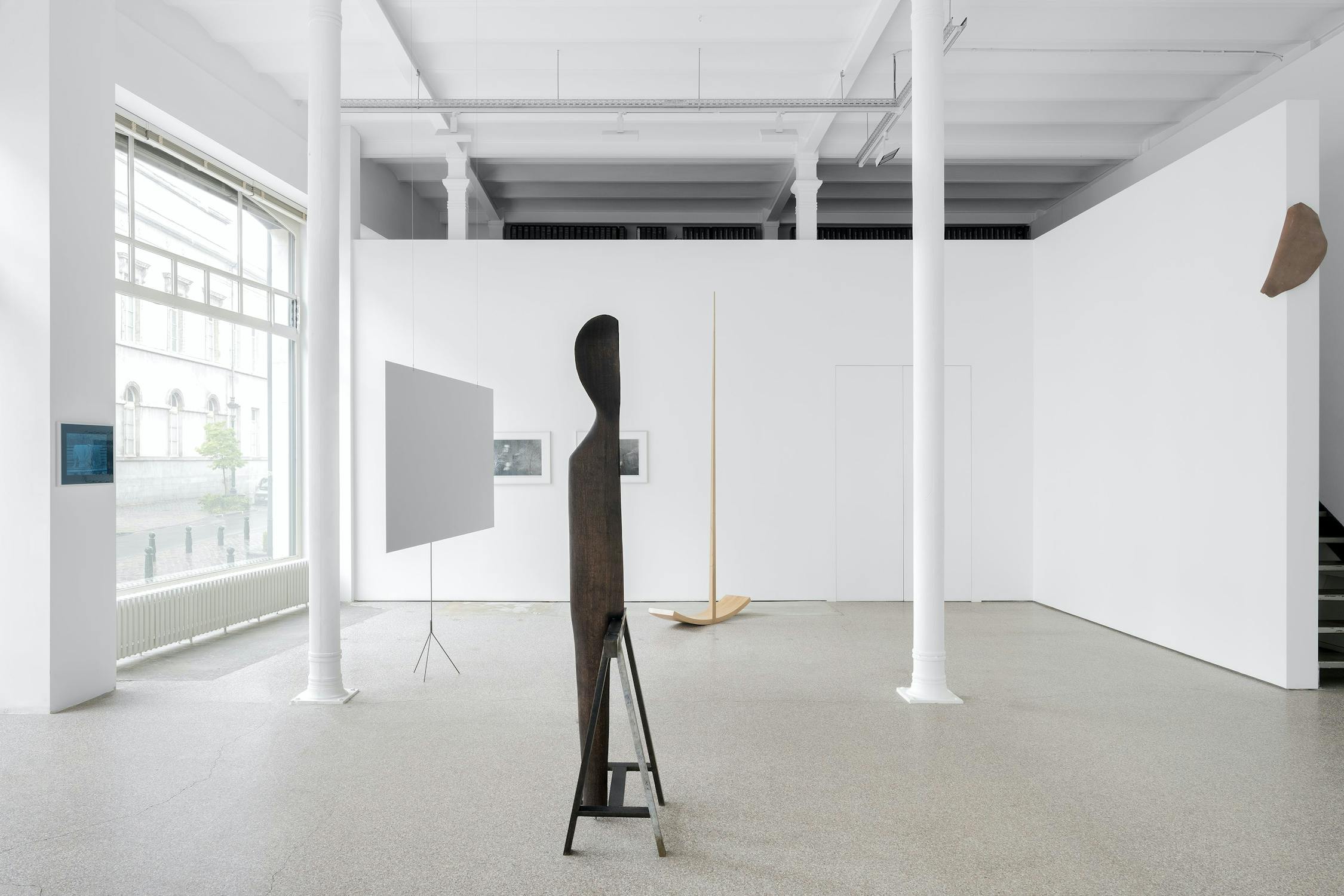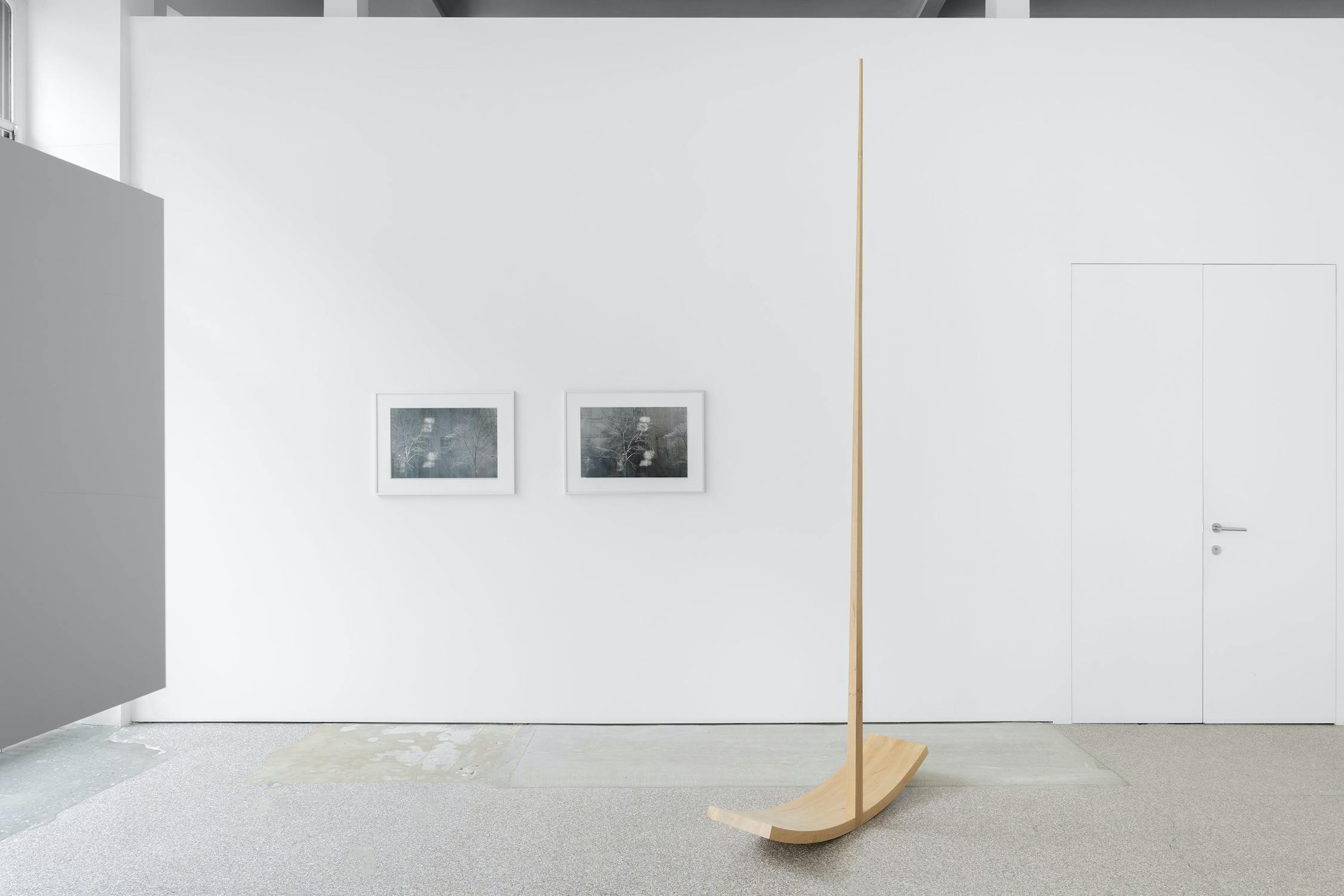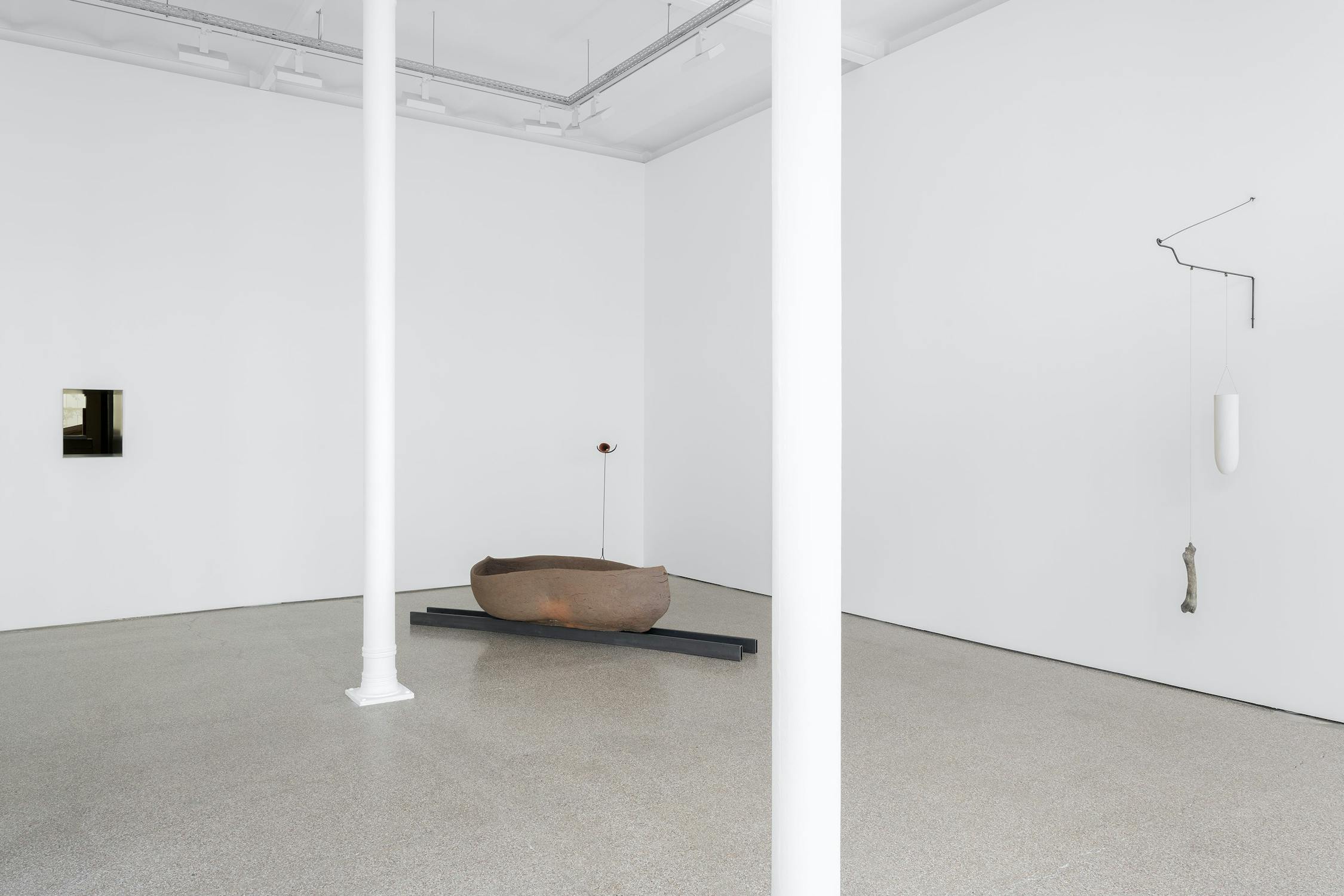As we emerge from our bubbles, we’re greeted by the clarion call of Katinka Bock’s exhibition, a visceral reminder that the ‘viewing room’ format rarely accommodates art experiences. This quiet exhibition moves viewers’ bodies in numerous ways. Not only must we look up, through, around, below, behind and over, but upon careful scrutiny we realize how each sculpture exhibits a particular tension, a polyphony whose force is stronger than mere balance or harmony. Our bodies feel it, too. And it feels special, even remarkable!

Gazing upwards, we see Palomar (all works 2020), a ceramic wallwork that evokes a rumpled fabric, whose subtle pattern was likely imprinted with a screen prior to firing. Across the room, hangs the enigmatic photograph Lang und kurz, which captures two shirts draped across a park bench, signaling some mysterious disappearance or loss. Not only is the photo framed under blue glass, but its view is blocked by a screen hung in parallel with the window. Positioned between the screen and photo stands Junior, a clay skullcap pivoting on a point whose shadow bounces behind it on the screen, gently swayed by air currents. Nearby, we find two photographs, One and one (New York)- diptych, dynamic images of windblown trees, entangled with things flying by and sunshine reflecting off boarded-up buildings. Although Monotonie is docked to a rocking base, it stands motionless, directing its ray at the cosmos. Carved from oak, I imagine it could be a maquette for a contemporary monument to honor human ingenuity during lockdown, as people put their creative talents to use, learning all sorts of new skills.

With our backs to the diptych, Haltung (IU), suddenly appears reflected on the screen’s backside, prompting us to move forward. Like the photo of trees paired with wooden planks, several sculptures juxtapose readymade and manmade forms. A and I (one of eight) posits an oak object, whose oar-like stature evokes a body’s profile braced against a familiar object, the IKEA trestle, whose 4 legs form two ‘As’. Cast in bronze, the fourth leg not only surprises with its uncharacteristically white patina, but it balances into place on this steel trestle under its own weight. Behind it, sited atop the radiator, sits Warm sculpture (olo), a rather large polished steel door knob supporting a bronze object, reminiscent of driftwood tossed ashore.
Finally, we’re positioned to explore Haltung (IU), whose tension proves rather literal, since a tube-sock shaped ceramic object serves as a counter-weight to balance a bronze femur hung at the very height of the artist’s own thigh bone. The tension increases as we walk around Fermata, a rather large baked-clay boat that appears to have washed ashore, where it paused atop rail tracks. Despite being motionless, the boat appears to be collapsing under its own weight, as if it were roughed up at sea during a storm. Poised behind Fermata is Fare, a ceramic scope, whose proximity to the corner prevents us from peering through, so we must imagine its focus instead. By contrast, we are free to gaze through Einsicht bewegt (or ‘insight moves’), a large rectangular hole cut into the wall, granting everyone easy access to backroom happenings. Bock’s sculptures have now pulled us full circle around the gallery. Whatever insight is gained will continue pulling us further afield.

There is perhaps another way to read this exhibition that’s quite fun. It could be a stage set for a play loosely based on Mr. Palomar’s Vacation, the first chapter of Italo Calvino’s novel Mr. Palomar which recounts a fellow searching for insight during daily discoveries. Wandering about this curious exhibition, we are all Mr. Palomar on vacation. Calvino’s book has three chapters, each with three sections sub-divided into three vignettes, so these nine sculptures echo each chapter’s format. Suddenly, the beach (boat, oar and driftwood), garden (oak, bone and wind) and sky (cosmos, telescope and sunshine) references come into focus.
Lastly, there is a movement afoot that seems to have eclipsed curators’ radars. While it goes without saying that most contemporary sculptors have found inspiration in yesteryear’s post-minimal, readymade and in situ practices, few have identified the coterie of female sculptors producing elegant hybrids that delicately balance all three approaches at once. Primarily born in the seventies, this group encompasses Nairy Baghramian, Katinka Bock, Carol Bove, Alicja Kwade, Caroline Lathan-Stiefel, Shana Lutker, Amalia Pica, Analia Saban, Tatiana Trouvé and Shirley Tse, apparent heirs to the complicated sculptures of Angeleno Coleen Sterritt.